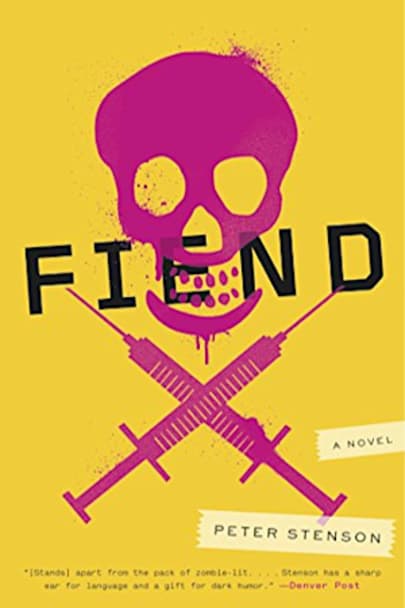There’s more than one kind of monster.When Chase first sees the little girl in umbrella socks disemboweling the Rottweiler, he’s not too concerned. As a longtime meth addict, he’s no stranger to such horrifying, drug-fueled hallucinations. But as he and his fellow junkies soon discover, the little girl is no illusion. The end of the world really has arrived. And with Chase’s life already … Chase’s life already shattered by addiction, the apocalypse might actually be an opportunity—a last chance to hit restart, win back the love of his life, and become the person he once dreamed of being. That is, if the darkness inside him doesn’t destroy everything—again.
more



realistic i believed they know about being a fiend from being a addict in the drug world
In a world glutted with zombie tales, Fiend by Peter Stenson promises a different angle: zombies vs. meth freaks. The quirky promise of possible redemption of a meth addict interlaced with stock zombie tropes may very well attract a good number of readers looking for something different. Different and unique it is. However, mature readers will be very disappointed.
The story opens with great promise. After spending a few days enjoying the dubious pleasures of chrystal meth, two addicts are running low and jonesing for their next hit. Suddenly, the first zombie appears—a cute little girl. The author’s attention to detail is laudable. Readers will certainly be drawn into the action as the characters try to decide if what they see is reality or illusion. Mr. Stenson’s attention to visual detail continues throughout the tale and could be considered the novel’s strongest point. The author’s descriptive skill really takes the reader there.
The novel is populated with a conglomeration with highly flawed, almost freakish but eminently interesting characters, all focused on only one thing—meth. (Revealing more on this topic would be a plot spoiler). Unfortunately, the sudden appearance of flesh eating zombies turns their world upside down. All the characters are forced to make devastating decisions. Should they try to kick their destructive habits or must they continue their addictions?
The narrative format is hard to define. There are no chapters. Because the text is divided into dated, time-stamped entries, it at first is appears to be a sort of journal. However, since the story is written in the present tense, it seems more like a stream of conscience form of fiction. This inconsistency can slow the reading process. In addition, the text lacks standard punctuation, even quotation marks, again disrupting and slowing the reading process. A few more mature writers can get away with rejecting the conventions of standard punctuation because readers know that at that at the end of the novel they will be left with a life-changing aha moment that makes the tough read worthwhile. This is not the case with Fiend. At the end, readers are left with only one question. Why?
The one element that destroys this novel’s potential is the puerile, constant, never-ending, overwhelming focus on genitals. Time after time the author chooses genital metaphors to describe situations, actions, and feelings totally unrelated to sex. For example: Pumping a shotgun feels like “Jerking off God.” A dead person looks like “A used tampon.” Perhaps best of all, a woman who crashes through a windshield, headfirst is “A postcoital dick, slow in its oozing of liquid.” A couple of such comments would be good enough to demonstrate the protagonist’s state of mind, but the constant flood of tasteless metaphors and similes is overwhelming. This very same character (who by the way only has a GED) quotes Sir Thomas More and F. Scott Fitzgerald, and then compares a zombie to a golem. This inconsistency makes the protagonist’s voice seem like that of someone trying too hard to imitate a drug addict.
Luckily, there is a target market for this novel. Teenage boys who spend their class time drawing penis diagrams on their desks will think that this is the best book they ever read. Unfortunately, this particular demographic seldom reads.
Mr. Stenson has a good eye and great promise. With maturity, he will no doubt eclipse this novel and produce something very special.